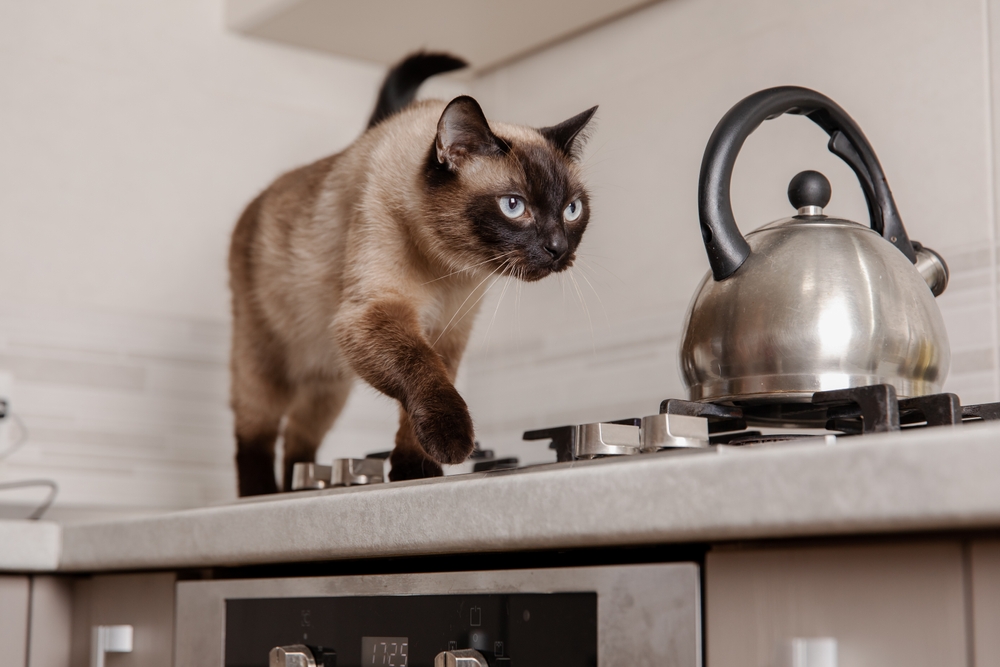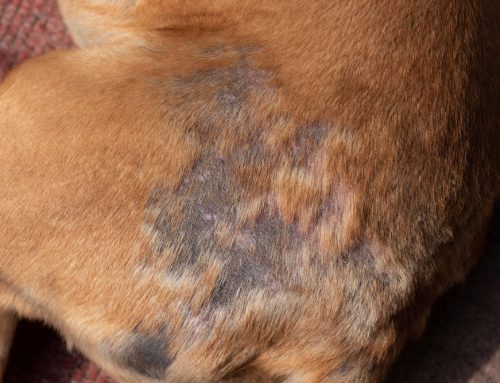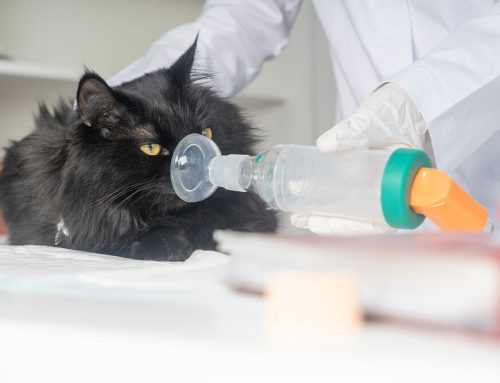As a pet owner, you hope your furry companion never faces a veterinary emergency, but life with a pet can be unpredictable. Whether your dog decides that the TV remote is a chew toy or your cat thinks a rubber band is a gourmet snack, a pet emergency can happen in the blink of an eye. Luckily, our Valley Center Veterinary Clinic team is here to help when things go sideways.
1. Poisoning: Pets and their taste for trouble
You’d think pets would know better than to eat stuff that isn’t food, but here we are. Poisoning is a top emergency, with culprits ranging from household cleaners to your beautiful but deadly lilies.
Watch for these pet emergency signs
- Vomiting and diarrhea
- Drooling as though they’ve just seen a juicy steak.
- Seizures or unusual behavior such as staring blankly at walls
How to prevent this pet emergency
- Pet-proof your home — Lock up household cleaners, medications, and human food.
- Learn about toxic plants — Keep those toxic plants out of reach or better yet, out of your house and yard.
- Emergency kit — Keep the number for the nearest animal poison control center handy. You never know when your cat is going to decide that your houseplants look like a salad bar.
- Prevention tip — Store all chemicals and medications securely. If it smells like food or looks like a toy, your pet will probably try to eat it.
2. Choking: Because pets see everything as snacks
Pets have an amazing ability to turn anything into a snack or a toy—which brings us to choking hazards. Your dog thinks tennis balls are gourmet, while your cat believes every string is spaghetti.
Watch for these pet emergency signs
- Coughing and gagging
- Difficulty breathing or pawing at the mouth
- Panic—theirs and yours
How to prevent this pet emergency
- Supervised play — Keep an eye on your pet during playtime, especially with small toys and chewables.
- Safe toys — Give your dog or cat only pet-safe toys that are too big to swallow and won’t break into tiny, tempting pieces.
- Emergency drill — Learn the Heimlich maneuver for pets. Yes, it’s a thing—and no, it doesn’t involve singing “Stayin’ Alive”.
- Prevention tip — Inspect your pet’s toys regularly for wear and tear. If it’s small enough to fit in your pet’s mouth, it’s probably a choking hazard.
3. Trauma or injury: Pets’ misadventures
From car collisions to epic falls, trauma can happen in a heartbeat. Sometimes your dog thinks they’re Superman, or your cat believes they can parkour.
Watch for these pet emergency signs
- Lameness or limping
- Bleeding or bruising
- Shock
How to prevent this pet emergency
- Secure play areas — Create safe zones for play—indoors and outdoors. House-proofing isn’t just for toddlers!
- Observe behavior — Monitor your pet for any changes or injuries after a mishap.
- Emergency plan — Keep your vet’s contact info and a reliable mode of transport ready for unplanned visits.
- Prevention tip —Avoid high-risk situations such as letting your pet roam near traffic or participating in extreme sports without proper gear.
4. Urinary blockage: Painful potty problems in pets
Urinary blockages can be a major emergency, especially in male cats. It’s like having to go but finding all the restrooms locked.
Watch for these pet emergency signs
- Frequent attempts to urinate with little to no success.
- Lethargy and pain
- Blood in urine
How to prevent this pet emergency
- Vet visits — Regular checkups can catch potential issues early.
- Monitor habits — Keep an eye on your pet’s bathroom habits. Any change could be a red flag.
- Diet and hydration — Ensure your pet is well-hydrated and on a diet that helps prevent urinary blockages.
- Prevention tip — Encourage water intake by setting up a pet fountain and feeding your cat or dog wet food. Hydrated pets have happy bladders.
5. Foreign object ingestion: When your pet is full of swallowed surprises

Pets are like toddlers—everything goes in their mouths. From socks to squeaky toys, if your pet can swallow it, they probably will.
Watch for these pet emergency signs
- Vomiting or abdominal pain
- Lack of appetite and lethargy
- Difficulty defecating
How to prevent this pet emergency
- Pet-proof the house — Keep small, swallowable items out of reach.
- Safe toys — Choose toys that won’t break into pieces easily.
- Emergency plan — Know when to head to the vet—when in doubt, check it out.
- Prevention tip — Supervise your pet during playtime and keep potentially dangerous objects out of reach. Think of it as toddler-proofing for grown-ups.
Being a pet owner is a wild ride filled with cuddles, chaos, and sometimes, crises. By helping prevent—but also knowing how to respond appropriately to—these common pet emergencies, you can handle surprises like a pro and keep your furry pal safe and happy. If you have questions regarding pet emergencies, contact our Valley Center Veterinary Clinic team. We can help you navigate pet-related challenges because when it comes to the pet you love, only the best will do.







Leave A Comment